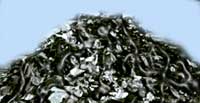Sweeping Debris Disposal

Sweeping Debris Disposal |
 |
Managing Street Sweeping DebrisSweeping debris reuse options from the Minnesota Pollution Control Agency.
Here is how the Minnesota Pollution Control Agency outlines management options for reuse of street sweepings. In their document, titled Hazardous Waste Division Fact Sheet #4.54, June 1996, they acknowledge that individual cities and counties may have additional requirements such as testing and approval. What are Street Sweepings?Street sweepings are materials such as sand, salt, leaves and debris removed from city streets, parking lots and sidewalks in order to prevent these materials from being washed into storm sewers and surface waters, and to improve the appearance of public roadways. Street sweepings are not potentially contaminated materials removed from spill sites, hazardous waste cleanup sites or other contaminated areas. Materials from these sources, whether or not they are removed by a sweeping process, must be tested to determine if they are hazardous. If hazardous, they must be managed according to hazardous waste requirements. If you are working at a spill or cleanup site, contact the Minnesota Pollution Control Agency (MPCA) coordinator assigned to that site for more information.
Reusing Street SweepingsAlthough test results have shown street sweepings from normal sweeping operations to be safe and acceptable for reuse in many areas, as a precaution, MPCA staff recommends sweepings not be used in these areas:
In addition, do not dispose of street sweepings in or near wetlands or water. Prior to reuse, all trash, leaves and other debris should be removed from the sweepings (this is often accomplished by screening, but other methods may also be used). Dispose of trash and debris removed from the sweepings by recycling (aluminum cans, etc.), composting (leaves, etc.), or sending to a sanitary landfill. Table 1: Separation Distances for Using Sweeping as Fill
If you are storing sweepings prior to reuse, cover them with a plastic tarp or other covering to prevent erosion. Street sweepings can often be successfully reused in the following ways: 1. Mix with new salt/sand mixture for winter application to roads, parking lots or sidewalks. When screening sweepings for reuse in this way, use a smaller mesh for the final screening to ensure all of the larger debris has been removed. (A 3/4-inch mesh will screen out much of the debris.) 2. Use as daily cover material on landfills. When reusing sweepings as cover material, the MPCA recommends using them only on sanitary or demolition landfills that have groundwater monitoring systems. Table 2: Requirements for Using Sweepings as Cover Material
|
© 2005 - 2019 World Sweeper
|
Sweeping Disposal Contents
|